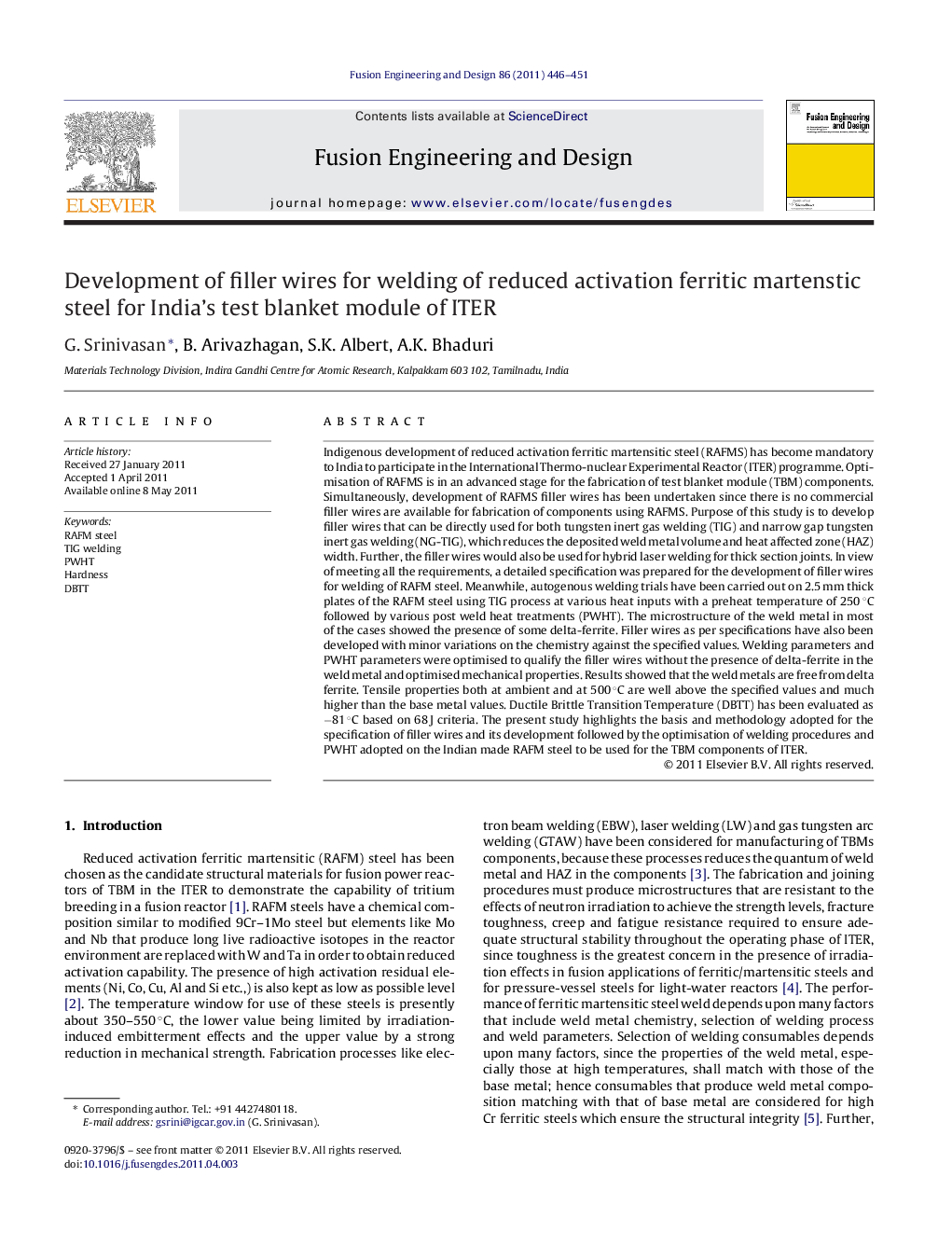| Article ID | Journal | Published Year | Pages | File Type |
|---|---|---|---|---|
| 272145 | Fusion Engineering and Design | 2011 | 6 Pages |
Indigenous development of reduced activation ferritic martensitic steel (RAFMS) has become mandatory to India to participate in the International Thermo-nuclear Experimental Reactor (ITER) programme. Optimisation of RAFMS is in an advanced stage for the fabrication of test blanket module (TBM) components. Simultaneously, development of RAFMS filler wires has been undertaken since there is no commercial filler wires are available for fabrication of components using RAFMS. Purpose of this study is to develop filler wires that can be directly used for both tungsten inert gas welding (TIG) and narrow gap tungsten inert gas welding (NG-TIG), which reduces the deposited weld metal volume and heat affected zone (HAZ) width. Further, the filler wires would also be used for hybrid laser welding for thick section joints. In view of meeting all the requirements, a detailed specification was prepared for the development of filler wires for welding of RAFM steel. Meanwhile, autogenous welding trials have been carried out on 2.5 mm thick plates of the RAFM steel using TIG process at various heat inputs with a preheat temperature of 250 °C followed by various post weld heat treatments (PWHT). The microstructure of the weld metal in most of the cases showed the presence of some delta-ferrite. Filler wires as per specifications have also been developed with minor variations on the chemistry against the specified values. Welding parameters and PWHT parameters were optimised to qualify the filler wires without the presence of delta-ferrite in the weld metal and optimised mechanical properties. Results showed that the weld metals are free from delta ferrite. Tensile properties both at ambient and at 500 °C are well above the specified values and much higher than the base metal values. Ductile Brittle Transition Temperature (DBTT) has been evaluated as −81 °C based on 68 J criteria. The present study highlights the basis and methodology adopted for the specification of filler wires and its development followed by the optimisation of welding procedures and PWHT adopted on the Indian made RAFM steel to be used for the TBM components of ITER.
► Weld microstructure produced by RAFMS filler wires are free from delta ferrite. ► Cooling rates of by weld thermal cycles influences the presence of delta ferrite. ► Weld parameters modified with higher pre heat temperature and high heat input. ► PWHT optimized based on correlation of hardness between base and weld metals. ► Optimised mechanical properties achieved by proper tempering of the martensite.
